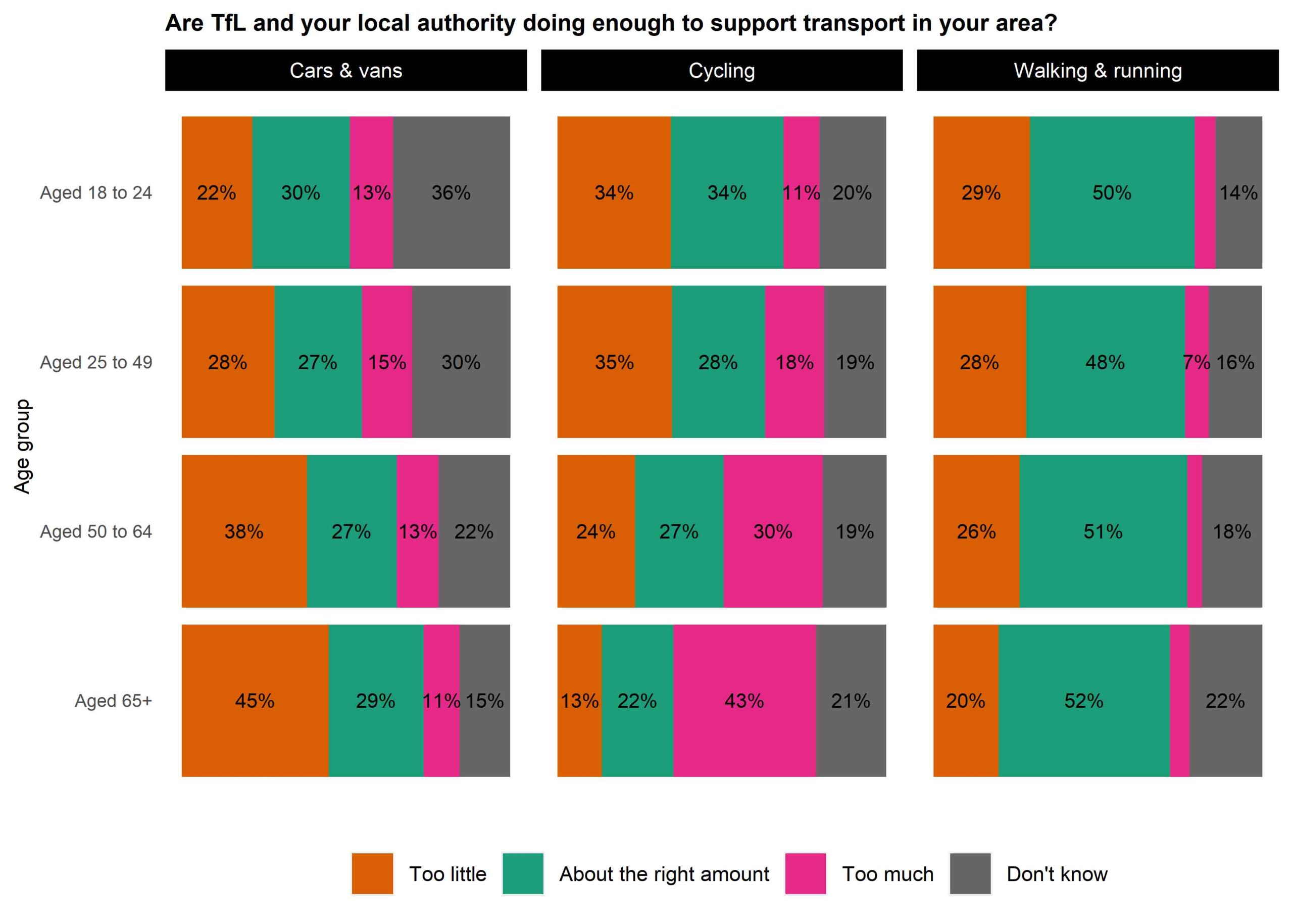Re-imagining London’s Streets: What drives attitudes to active travel funding?
Jamie Furlong, David Fevyer, and Rachel Aldred
Funded byTransport for London (TfL)

Survey findings to the question: Are TfL and your local authority doing enough to support transport in your area?
THE SHIFT EXPERIENCED during the COVID-19 pandemic to more people walking and cycling, exposed the unequal allocation of space in Britain’s towns and cities for different transportation methods. In response, the government created an Active Travel Fund to support English local authorities to rapidly improve cycling and walking facilities. This funded a range of schemes (e.g. protected cycle lanes, pedestrian crossings, School Streets and Low Traffic Neighbourhoods). Some have been controversial and not all remain. For instance, in London around 130 Low Traffic Neighbourhoods were implemented in 2020-2021, but around thirty have since been removed. What determines people’s attitudes to these kinds of investments in walking and cycling? Who wants more funding for active travel, and who thinks there is already too much?
Using the Travel and Places TfL Survey data, which has around 1,500 repeat respondents in three waves, the team have been investigating associations between travel behaviour and attitudes, and demographic variables. Analysis has already found interesting demographic associations; for instance, around car ownership or age and attitudes to investment in different transport modes. Other topics to be explored with a third year of data include impacts of local ‘bikeability’ (quality of the local environment for cycling) on travel behaviour and attitudes, and whether getting to know a cyclist affects attitudes to cycling and cyclists.


